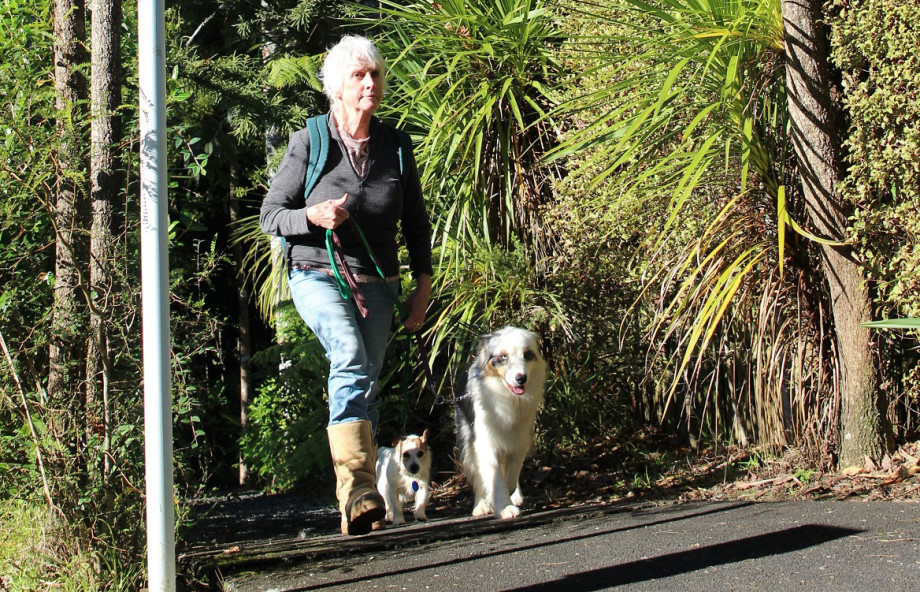Walking your dog
You can help protect Kauri from the PA pathogen that causes kauri dieback disease.

How to guidelines
- Clean all soil off your own footwear and other gear – every time you enter or leave an area with native trees. Clean all soil from within the recesses of your dog’s paws and from their coat before entering a Kauri forest and after leaving the forest the dog should be cleaned at home to remove any soil from their paws and coat. This is to avoid transferring the disease to new areas, or spreading it more widely in already affected areas. A speck of soil is enough to spread the disease.
- At home, use clean water and a dog-friendly soap or shampoo to thoroughly wash all soil off your dog’s paws and coat. Sterigene should not be used on the paws.
- Keep your dog on a lead at all times. One of the main ways the disease is spread is through transfer
by people – and also animals. So please stick to the track and avoid going near Kauri – including the roots – unless the track is board-walked. The roots of a Kauri are extremely delicate and grow close to the surface, so are particularly susceptible to disease. The roots can also grow outwards three times as far as a tree’s branches.
- Keep a cleaning kit in your vehicle. This should include brushes, an adequate supply of Sterigene for your own boots and gear, and plastic bags for bagging any gear that can’t be cleaned on-site. To avoid spreading contaminated soil inside your vehicle, pack a second pair of footwear for the drive home.
- Only use disinfectant on your footwear and other gear after you have removed all the soil; spray it on all the areas that have come into contact with the ground. Note that disinfectant should not be sprayed onto a dog’s skin or paws.
- Don’t walk your dog if the track is going to be muddy. The disease is spread more easily in wet conditions.
- If your favourite walking track has been closed – do not use it. Closures are only made when the risk of spreading the disease from or to an area is extraordinarily high.
- Never assume anywhere is free of PA. Infected trees may not show it. Even if you only ever use the same route, clean your gear – and your dog – both ways, every time.
- Spread the word within your networks about the need to help stop the spread of PA, and be seen doing the right thing. Everyone has a part to play in saving Kauri.
More information
-
Department of Conservation’s ‘Dog access on public conservation land’ page. This includes information on where dogs can be taken.
-
Auckland Council’s dog pages.
National plan to protect kauri
From 2 August 2022 ten new rules/regulations have been introduced as part of a national plan to help protect kauri from the Phytophthora Agathidicida (PA) pathogen that causes ‘dieback’ disease.
More information on the Plan and how it may affect your visit.
Disclaimer
This resource will be updated in the coming months, with new resources to be developed. Last updated: March 2017.
The information in this guide is intended to be general information. It is not intended to take the place of, or to represent, the written law of New Zealand or other official guidelines or requirements. While every effort has been made to ensure the information in this document is accurate, the Ministry for Primary Industries (and any of their employees or agents involved in the drafting of this guide) do not accept any responsibility or liability for any error of fact, omission, interpretation or opinion which may be present, nor for the consequences of any decisions or actions based on this information.
The Ministry/The Kauri Protection Programme itself and on behalf of all the persons mentioned above, clarifies that it has no control over and is not responsible for the contents of any pages referenced or accessed from this guide other than pages provided by the Ministry/The Kauri Protection Programme. Any hyperlinks to other Web sites imply neither responsibility for, nor approval of, the information contained in those other Web sites on the part of the Ministry/The Kauri Protection Programme.